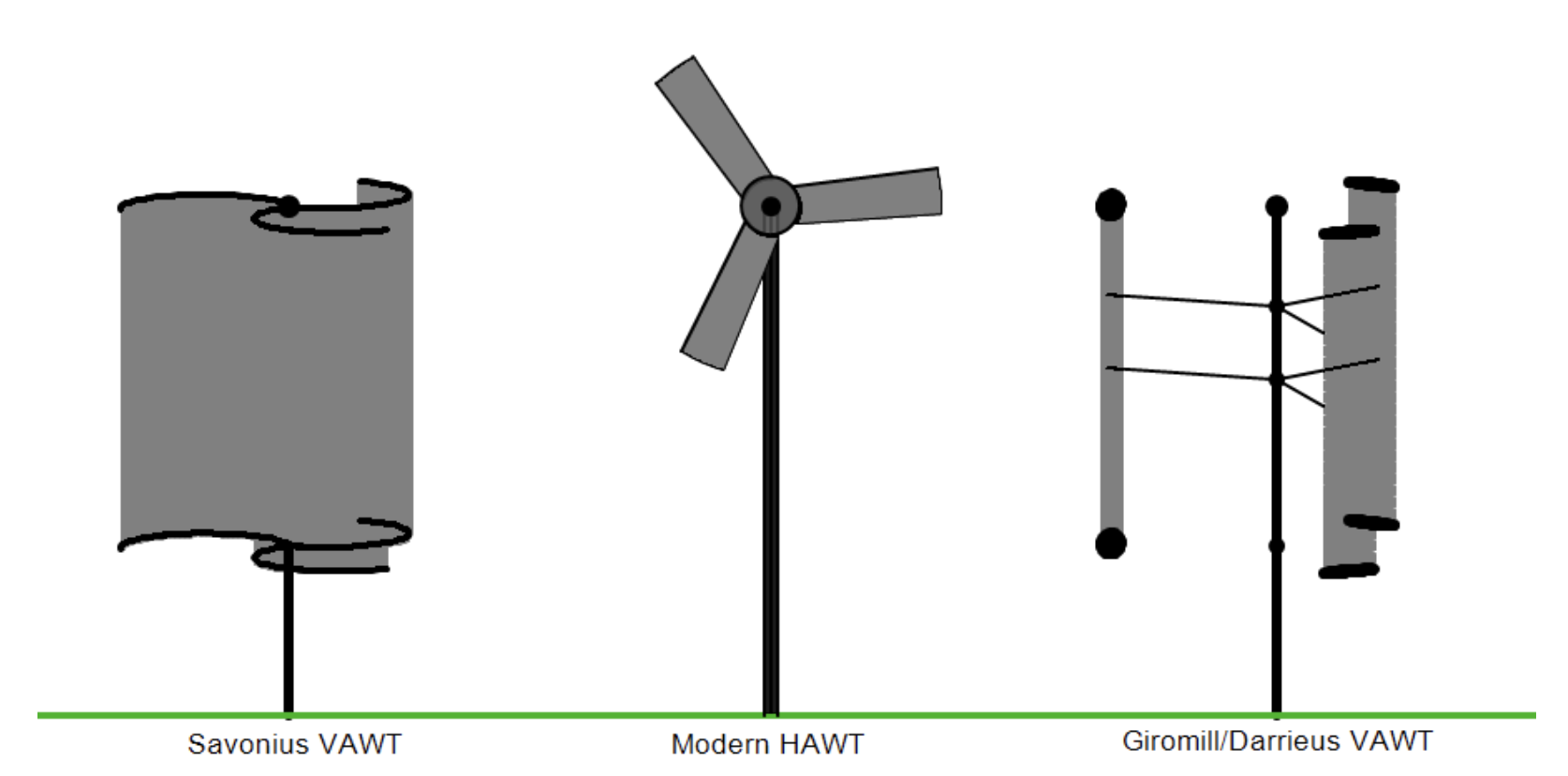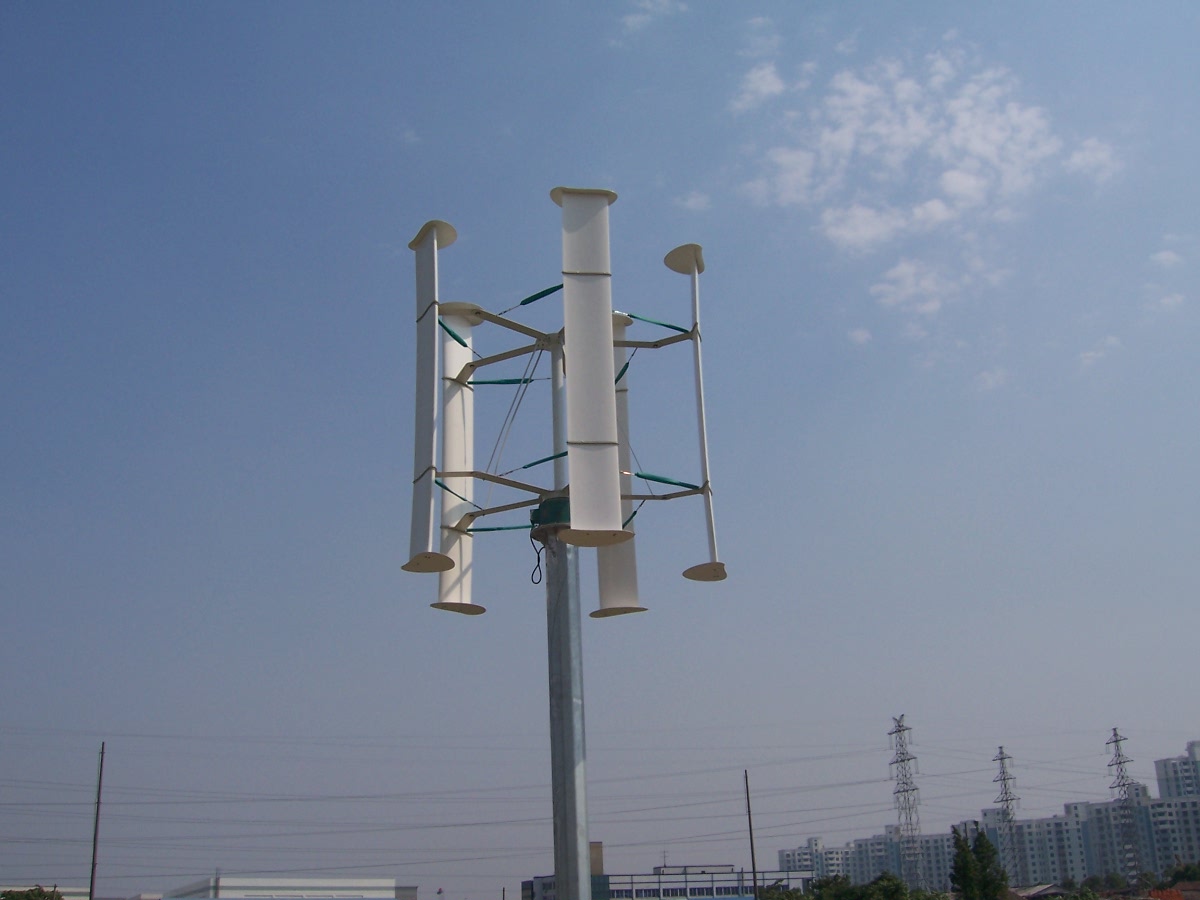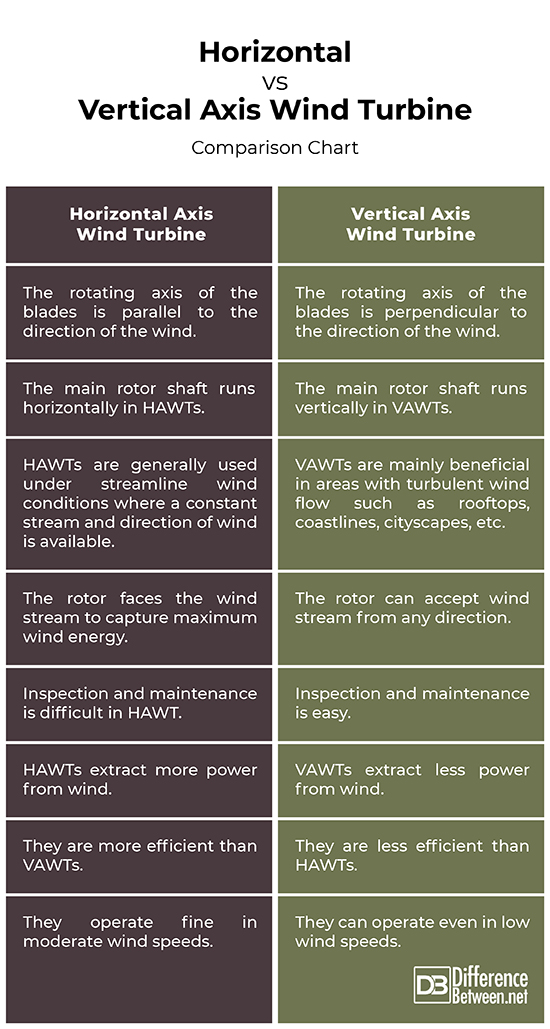Difference Between Horizontal and Vertical Axis Wind Turbine
The term windmill is used to refer to the wind-powered machine that grinds grain. But modern machine applications are more correctly called ‘wind turbines’ because they can be used for a variety of applications. Wind turbines are the most effective way to convert wind energy into electrical or mechanical energy. Wind turbines can be mainly classified into two categories, according to the configuration of the rotating axis of rotor blades: horizontal axis wind turbine (HAWT) and vertical axis wind turbine (VAWT). When the rotating axis of the blades is parallel to the wind stream, the turbine is called HAWT, and when the rotating axis is perpendicular to the wind stream, it is called VAWT. Horizontal axis types are the most popular and commonly used commercial wind turbines. Let’s take a look at the technical differences between the two configurations.
Horizontal Axis Wind Turbine (HAWT)
HAWT, short for Horizontal Axis Wind Turbine, is the most commonly used design configuration in wind turbines with rotors similar to that of aircraft rotors. When the rotating axis of the blades is parallel to the wind stream, the turbine is called horizontal axis wind turbine (HAWT). HAWT captures kinetic wind energy with a propeller type rotor and their rotational axis is parallel to the direction of the wind. HAWTs are available in many sizes ranging from a few hundred watts up to hundred kilowatts. These types of wind turbines are typically used under streamline wind conditions where a constant stream and direction of wind is available in order to capture the maximum wind energy. HAWTs are not effective where the wind is turbulent, so they are generally located in areas where there is a constant directional airflow.
Vertical Axis Wind Turbine (VAWT)
Vertical Axis Wind Turbine, or VAWT, is probably the oldest type of windmills in which the axis of the drive shaft is perpendicular to the ground. It is a type of windmill where the main rotor shaft runs vertically, as opposed to the horizontal axis wind turbine. The blades of the VAWTs rotate with respect to their vertical axes that are perpendicular to the ground. VAWT designs are sometimes loosely categorized as lift or drag based designs. They can capture wind from any direction and their heavy machinery is at ground level. Since the machinery is set on the ground, it simplifies the wind tower design and construction and reduces the turbine cost consequently. Unlike HAWTs, VAWTs are typically used in areas with turbulent wind flow such as coastlines, rooftops, cityscapes, etc.
Difference between Horizontal and Vertical Axis Wind Turbine
Design
– Horizontal Axis Wind Turbine (HAWT) is the most commonly used design configuration in wind turbines with rotors similar to that of aircraft rotors. In HAWTs, the rotating axis of the blades is parallel to the direction of the wind. Vertical Axis Wind Turbine (VAWT), on the other hand, is probably the oldest type of windmills in which the axis of the drive shaft is perpendicular to the ground. It is a type of windmill where the main rotor shaft runs vertically, as opposed to the horizontal axis wind turbine.
Machinery
– The horizontal axis wind turbines have the entire rotor, gearbox and generator mounted at the top of the tower, which must be turned to face the wind direction. A significant advantage of vertical axis wind turbine over horizontal axis type is that the former can accept wind from any direction and thus no yaw control is needed. In VAWTs, the wind generator, gearbox and other main turbine components can be set up on the ground, which simplifies the wind tower design and construction and consequently reduces the turbine cost.
Wind Conditions
– HAWTs are generally used under streamline wind conditions where a constant stream and direction of wind is available in order to capture the maximum wind energy. HAWTs are not effective where the wind is turbulent, so they are generally located in areas where there is a constant directional airflow. VAWTs, on the other hand, are mainly beneficial in areas with turbulent wind flow such as rooftops, coastlines, etc. Unlike HAWTs, VAWTs can operate even in low wind speeds and they may be built at locations where tall structures are prohibited.
Horizontal vs. Vertical Axis Wind Turbine: Comparison Chart
Summary
Both horizontal and vertical axis wind turbines have about the same ideal efficiency but the HAWTs are more common. HAWTs have the entire rotor, gearbox and generator at the top of the tower and must be turned to face the wind direction. VAWTs, on the other hand, are omnidirectional which means the rotor can accept wind stream from any direction. Hence, no yaw mechanism is required. Plus, they do not require a constant adjustment or streamline velocity wind. In addition, VAWTs have a lower startup wind speed than the HAWTs. Moreover, they have comparatively lower noise signature than HAWTs and massive tower structures are less frequently used.
- Difference Between Caucus and Primary - June 18, 2024
- Difference Between PPO and POS - May 30, 2024
- Difference Between RFID and NFC - May 28, 2024
Search DifferenceBetween.net :
Leave a Response
References :
[0]Image credit: https://commons.wikimedia.org/wiki/File:Vawt.jpg
[1]Image rcedit: https://commons.wikimedia.org/wiki/File:HAWT_and_VAWTs_in_operation_large.gif
[2]Earnest, Joshua and Sthuthi Rachel. Wind Power Technology (3rd ed.). New Delhi, India: PHI Learning, 2019. Print
[3]Siddiquee, Shafiquzzaman, et al. Nanotechnology: Applications in Energy, Drug and Food. Berlin, Germany: Springer, 2019. Print
[4]Tong, Wei. Wind Power Generation and Wind Turbine Design. Southampton, Boston: WIT Press, 2010. Print
[5]Paraschivoiu, Ion. Wind Turbine Design: With Emphasis on Darrieus Concept. Canada: Polytechnic International Press, 2002. Print



